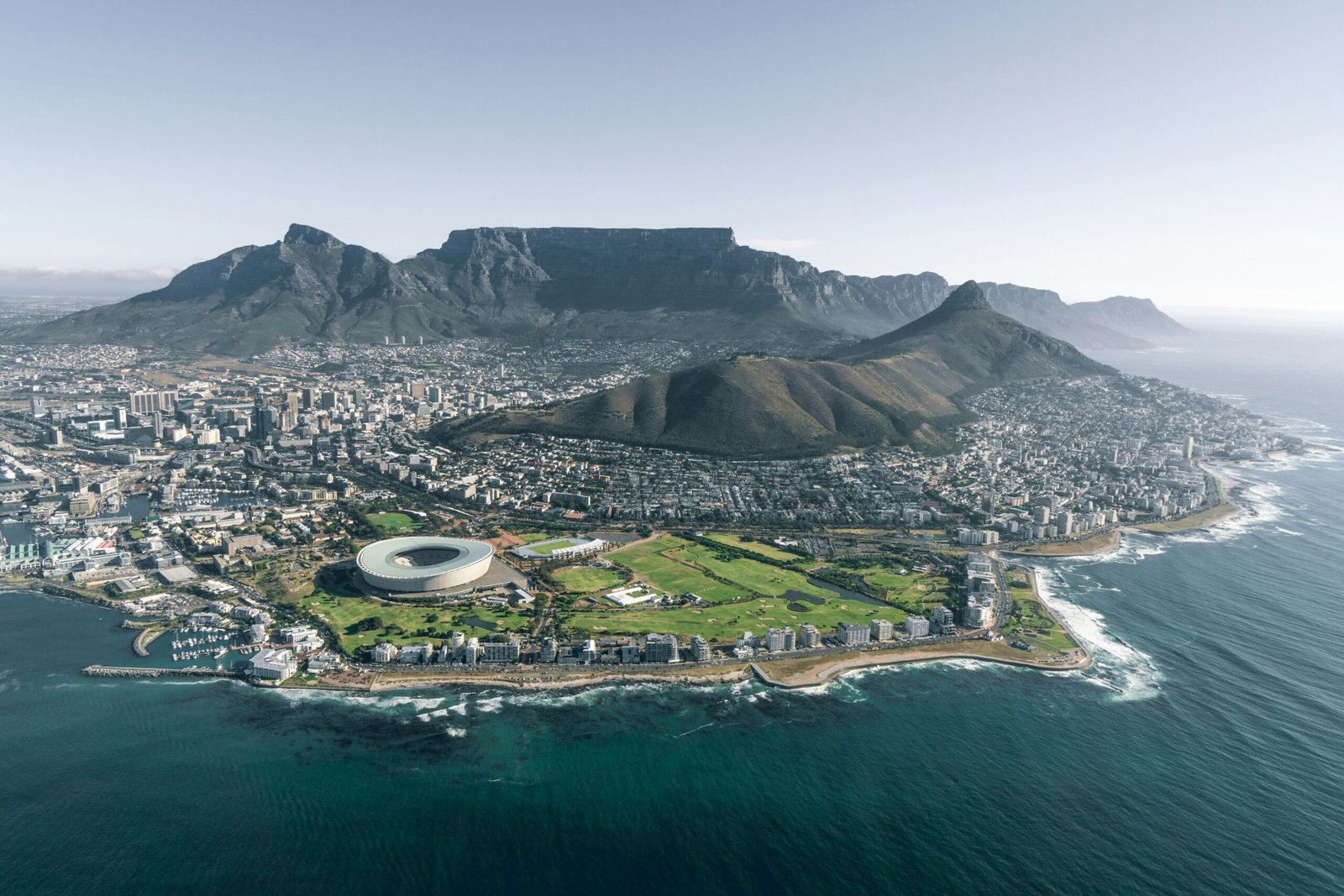South Africa Travel Guide: A Adventure Through Landscapes, Wildlife, and Culture
- Introduction: Why South Africa Should Be Your Next Adventure
- Two-Week Itinerary: Exploring South Africa’s Best in 14 Days
- Practical Tips: Navigating South Africa Like a Pro
- Safety in South Africa: Staying Savvy on the Ground
- Costs and Budgeting: Stretching Your Rand
- Health Precautions: Staying Well in the Wild
- Immersing in the Culture: Beyond the Sights
- Off-the-Beaten-Path Gems: Bonus Adventures
- Conclusion: Your South African Story Starts Here
South Africa is a land where the extraordinary becomes everyday – where you can sip a glass of velvety Pinotage in the morning, hike to jaw-dropping vistas by noon, and lock eyes with a lion before the sun dips below the savanna horizon. Having wandered this captivating country twice, I can tell you it’s a place that doesn’t just steal your breath – it snags your soul, too. From the wild expanse of Kruger National Park to the postcard-perfect shores of Cape Town, South Africa is a kaleidoscope of experiences waiting to be explored.
In here, we’re diving deep into everything you need to plan a stress-free, budget-savvy, and culturally rich South African adventure. Whether you’re dodging unnecessary expenses, decoding local customs, picking the perfect travel time, staying safe, or soaking up the most stunning sights, we’ve got you covered. Expect a two-week itinerary packed with must-sees, insider tips, and just a sprinkle of humor – because who doesn’t need a chuckle when navigating load shedding or tipping a parking “attendant”? Let’s embark on this journey together and uncover why South Africa keeps calling us back.
Introduction: Why South Africa Should Be Your Next Adventure
Picture this: You’re standing atop Table Mountain, the wind tousling your hair as Cape Town sprawls beneath you like a vibrant quilt stitched with ocean blues and urban greens. Or maybe you’re in Kruger National Park, holding your breath as an elephant ambles past your car, close enough to hear its rumbling exhale. South Africa isn’t just a destination – it’s a sensory overload of landscapes, wildlife, and cultures that collide in the most beautiful way possible.
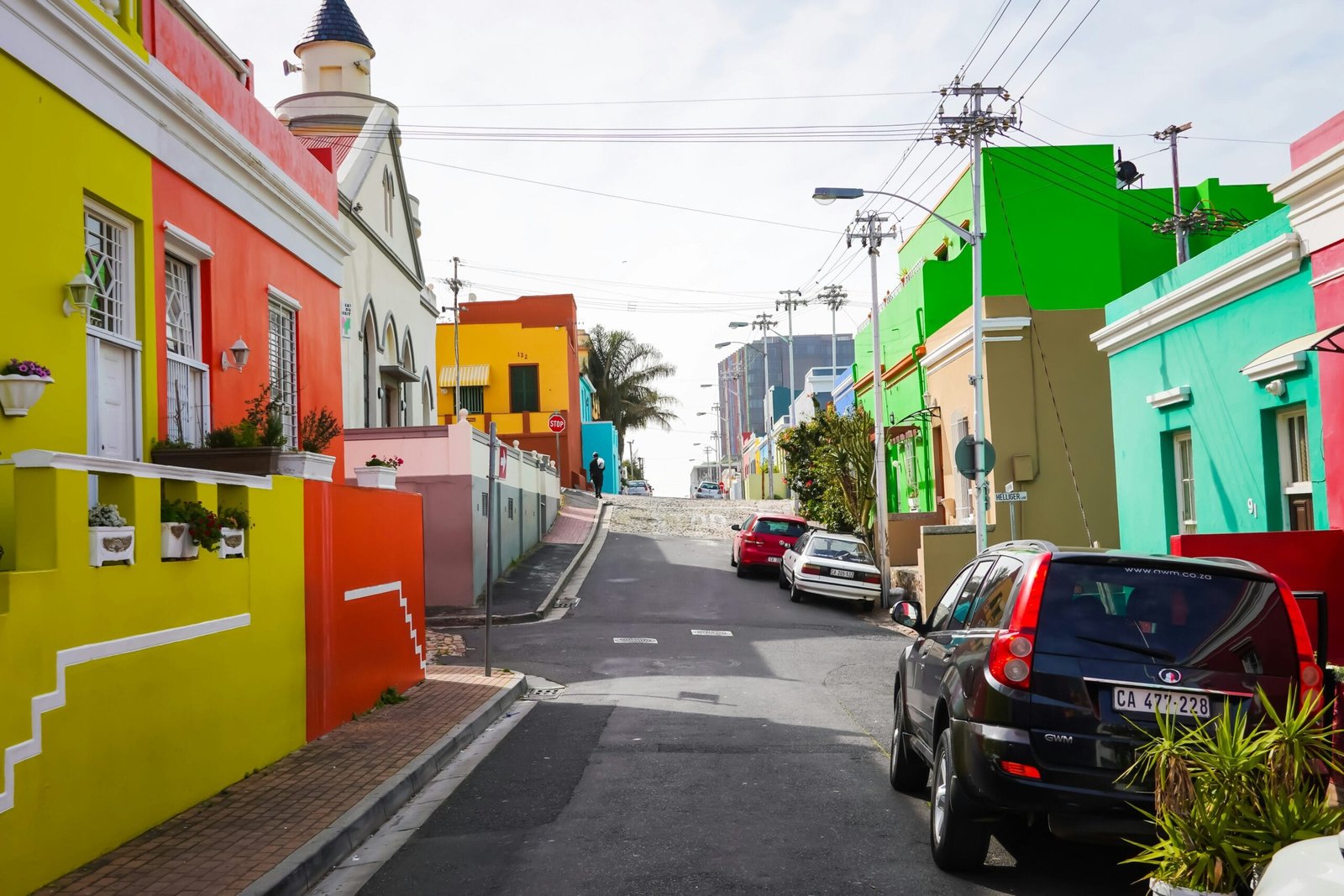
We’ll guide you through a two-week itinerary that hits the highlights – Johannesburg, Kruger, and Cape Town – while dishing out practical tips to keep your wallet happy and your trip seamless. From dodging petty scams to embracing a braai (that’s a South African barbecue, folks), we’ll help you travel smart, safe, and with a grin. So, buckle up – South Africa’s wild beauty awaits.
Two-Week Itinerary: Exploring South Africa’s Best in 14 Days
South Africa’s diversity demands a well-planned route, so we’ve crafted a two-week itinerary that blends urban energy, untamed wilderness, and coastal charm. This journey takes you from Johannesburg’s gritty streets to Kruger’s wildlife wonderland, then down to Cape Town’s dazzling shores. Here’s how to make it happen.
Day 1-2: Johannesburg – The City of Gold and Grit
Your adventure kicks off in Johannesburg, South Africa’s sprawling economic heartbeat. Known as Jozi or Joburg, this city isn’t about postcard prettiness – it’s raw, real, and rich with stories. A township tour is non-negotiable here. Soweto, with its colorful streets and heavy history, offers a window into South Africa’s soul. Visit Nelson Mandela’s former home, now a museum, and feel the weight of apartheid’s past alongside the resilience of its people. These guided tours aren’t just sightseeing – they’re a cultural handshake, often led by locals who share personal tales over a cold Castle Lager if you’re lucky.
Beyond Soweto, explore the Apartheid Museum for a deeper dive into the nation’s journey. If time allows, the trendy Maboneng Precinct beckons with its street art, hip cafes, and a vibe that’s equal parts Brooklyn and Africa. Stay sharp, though – Johannesburg demands caution. Skip nighttime strolls, keep valuables hidden, and trust your gut. It’s a city that rewards respect with revelations.
Day 3-6: Kruger National Park – Where the Wild Things Roam
From Johannesburg, grab a rental car and head east – about a five-hour drive – to Kruger National Park, a safari mecca spanning nearly 20,000 square kilometers. This is where you’ll meet the Big Five: lions, elephants, leopards, rhinos, and buffaloes. Whether you opt for a guided game drive or a self-drive adventure, Kruger delivers thrills. On my last visit, a lioness sauntered past our car at dawn, her amber eyes flicking toward us like we were mildly interesting snacks – heart-stopping stuff.

Book a stay at one of Kruger’s rest camps, like Skukuza or Lower Sabie, where you’ll find everything from budget huts to cushy bungalows. We absolutely loved Foxy Crocodile Bush Retreat – such a beautiful place with the best safari experiences! Guided safaris are worth it for first-timers. Rangers know the bush like the back of their hands, spotting tracks you’d miss and spinning yarns about the animals. If you’re driving yourself, stick to sealed roads unless you’ve got a 4×4, and never – ever – leave your vehicle outside designated areas. Pack binoculars, snacks, and patience; wildlife doesn’t punch a clock.
Spend at least three full days here. Mornings and evenings are prime for sightings, while midday is your chance to nap or swim at camp pools. Don’t skip the night drives – they’re a gateway to nocturnal wonders like hyenas and elusive leopards.
Day 7: Panorama Route – Nature’s Masterpiece
Leaving Kruger, take the scenic route back to Johannesburg via the Panorama Route along the Drakensberg Escarpment. This drive is South Africa’s answer to a real-life postcard. Stop at God’s Window for misty vistas that stretch forever, Bourke’s Luck Potholes for surreal rock formations carved by swirling rivers, and the Three Rondavels, where green peaks mimic traditional huts. It’s a full day’s journey – ambitious but doable – or split it with an overnight stay in Graskop for a slower pace. Either way, your camera will thank you.
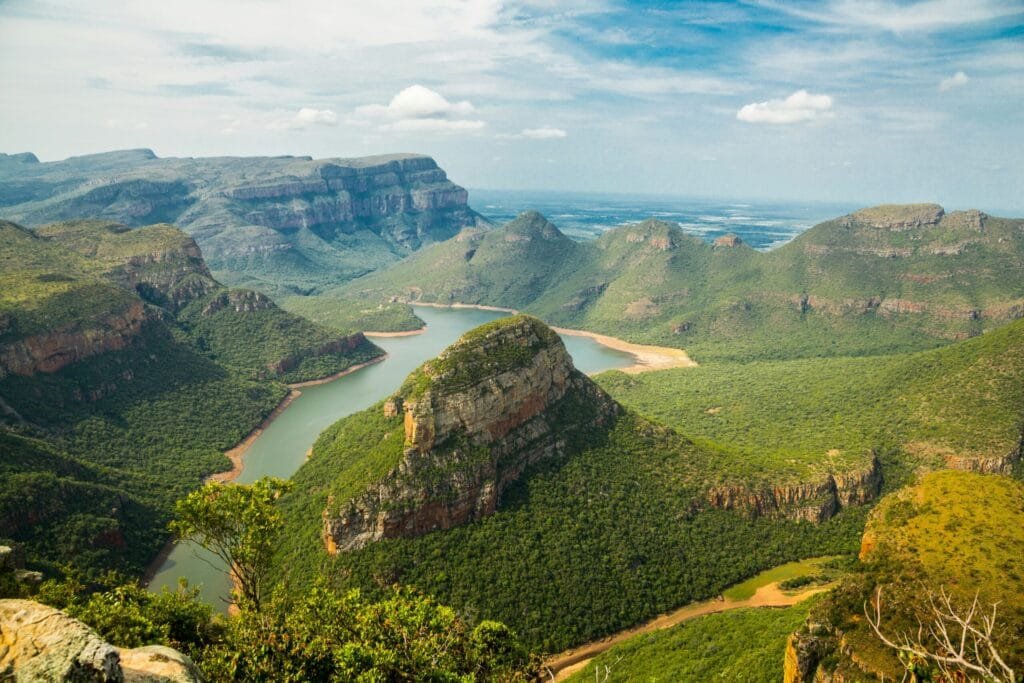
Day 8: Fly to Cape Town – The Mother City Awaits
Back in Johannesburg, hop a quick domestic flight (about two hours) to Cape Town, South Africa’s crown jewel. Nestled between Table Mountain and the Atlantic, this city is a feast for the senses. Rent a car on arrival – it’s your ticket to freedom here. Cape Town’s compact core and sprawling surrounds make it the perfect base for day trips, so settle into a guesthouse or Airbnb and get ready to explore.
Day 9-14: Cape Town and Surrounds – Six Days of Magic
With nearly a week in Cape Town, you’ve got time to savor its treasures. Here’s how to fill your days:
- Table Mountain: Ride the cable car or hike up (Platteklip Gorge is steep but stunning) for views that’ll make you question reality. Go early to beat clouds and crowds.
- Lion’s Head: A shorter, less touristy hike than Table Mountain, this peak offers 360-degree panoramas – sunset’s the golden hour here.
- Boulders Beach: Meet the African penguins waddling along this sandy cove. It’s adorable overload, and the water’s tempting if you don’t mind a chilly dip.
- Cape of Good Hope: Drive through Cape Point Nature Reserve to this rugged headland where cliffs meet crashing waves. It’s not the continent’s southernmost tip (that’s next), but it’s a stunner.
- Cape Agulhas: If you’ve got a spare day, detour to this windswept spot – the true meeting point of the Atlantic and Indian Oceans. Stand where two worlds collide and snap a pic by the marker.
- Wine Regions: Stellenbosch and Franschhoek are a 45-minute drive from Cape Town, brimming with vineyards and gourmet eats. Book a hotel here if you’re tasting – wine and driving don’t mix. Sample a Chenin Blanc or a bold Cabernet Sauvignon; South Africa’s wine game is world-class.
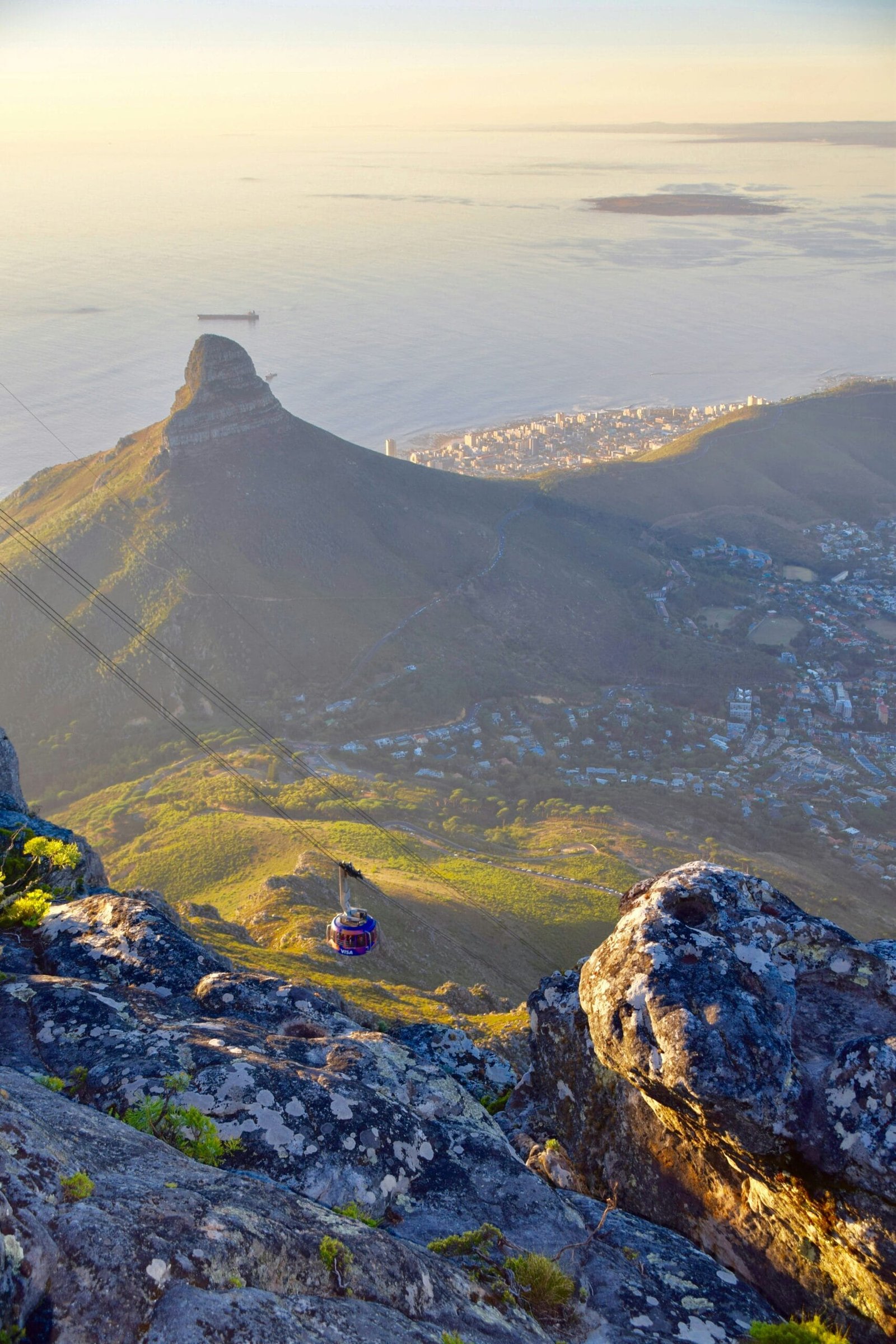
Cape Town’s beaches – like Camps Bay or Clifton – are perfect for lazy afternoons, while the V&A Waterfront blends shopping, dining, and harbor views. Skip the Garden Route unless you’ve got extra time; Cape Town’s orbit has plenty to keep you busy.
Practical Tips: Navigating South Africa Like a Pro
A great trip hinges on smart prep, so here’s the lowdown on cars, timing, and more.
Rental Cars: Your Road Trip Companion
Renting a car is the way to go in South Africa. We’ve had smooth rides booking through Check24 – compare prices and snag a deal. Bring an international driver’s license – it’s a must. South Africans drive on the left, which might feel like your brain’s doing cartwheels if you’re not used to it. Opt for an automatic transmission to ease the transition; it’s one less thing to sweat over on winding roads. Fill up whenever you can – gas stations thin out in rural areas – and keep cash handy for tolls.
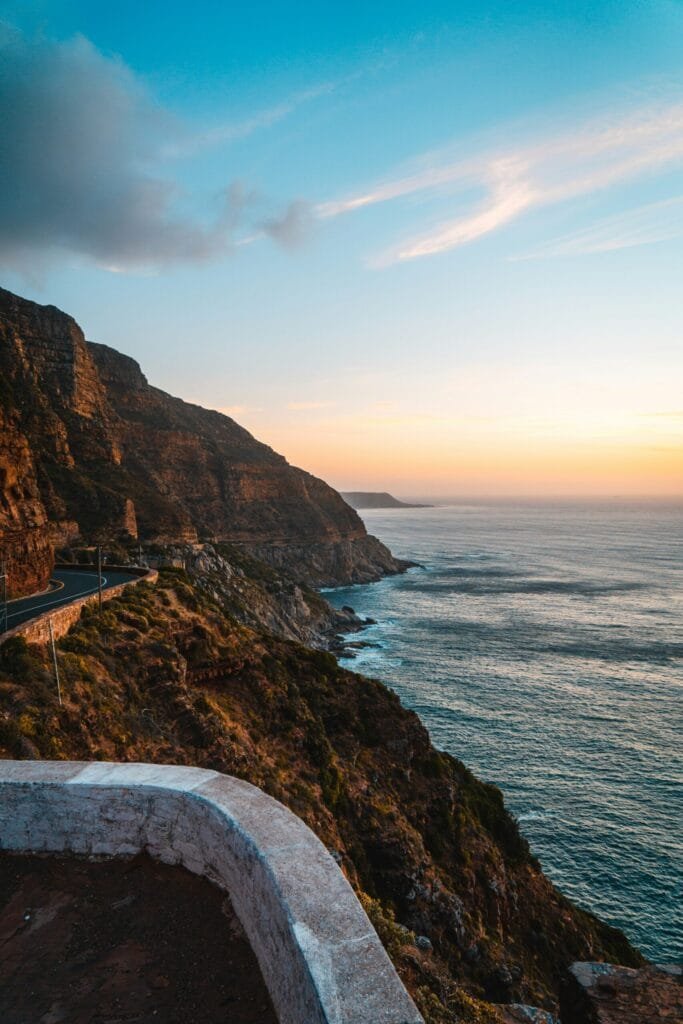
Best Time to Travel: Timing is Everything
February is our sweet spot for South Africa. The weather’s warm (think 25-30°C/77-86°F), the summer crowds have thinned, and hotel rates dip. It’s ideal for Cape Town’s beaches and Kruger’s lush greenery. That said, Kruger shines in winter (May-September) when sparse vegetation makes animals easier to spot. We’ve seen the Big Five in February, though, so don’t stress – nature doesn’t stick to a strict calendar.
Load Shedding: Power Plays and Preparation
Load shedding is South Africa’s quirky power-saving trick – scheduled outages to balance the grid. It’s less common in tourist hubs now, but it’s wise to be ready. Check schedules online (Eskom’s site or apps like EskomSePush work), pack a portable charger, and carry a flashlight. Hotels often have generators, but don’t count on it. It’s a minor hiccup – think of it as a chance to stargaze without city lights.
Safety in South Africa: Staying Savvy on the Ground
South Africa’s safety rap can feel daunting, but with common sense, it’s manageable. Johannesburg calls for extra vigilance. Driving through red lights at night is standard – locals do it to avoid trouble – and walking after dark is a no-go. Cape Town’s safer vibe still warrants care in quieter areas, while Kruger’s a bubble of calm – just don’t pet the lions.
Parking attendants are a quirky norm. These unofficial guardians watch your car for a tip – 1-2 euros (20-40 ZAR) keeps everyone happy. Skip it, and you might find a scratch or two. In townships, crime’s low thanks to tight-knit communities, but always tour with a guide. Respect and awareness are your best shields – South Africa rewards travelers who play it smart.
Costs and Budgeting: Stretching Your Rand
South Africa is a budget traveler’s dream compared to Europe or the US. A hearty meal for two – think grilled boerewors and pap – might run 500-700 ZAR (25-35 euros) at a mid-range spot. Drinks? A bottle of stellar local wine starts at 50 ZAR (2.50 euros), and beers like Castle or Black Label are even cheaper. Credit cards rule, but cash is king for tips and small buys. Use a Revolut card (first 200 euros fee-free) or DKB (free over 50 euros) for ATM withdrawals – just dodge machines with extra fees.
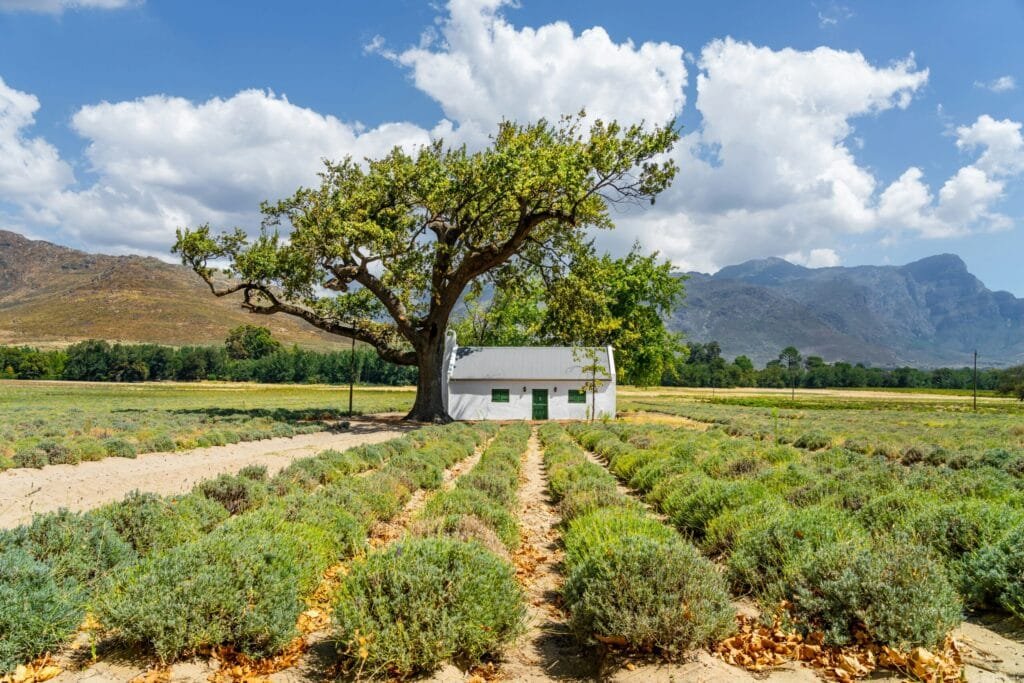
Accommodation varies wildly. Budget guesthouses in Joburg or Cape Town start at 600-800 ZAR (30-40 euros) per night, while Kruger camps offer similar rates for basic digs. Splash out on a wine-region boutique hotel for 1500-2000 ZAR (75-100 euros) if you fancy a treat. Eat local, drink local, and your wallet will thank you – save the splurging for home.
Health Precautions: Staying Well in the Wild
Malaria is a real risk in Kruger, so pack prophylaxis. Consult your doctor for meds like Malarone or doxycycline, and start them as prescribed – usually a day or two before arrival. Mosquito repellent and long sleeves at dusk are your backup squad. The sun’s no joke either – slather on SPF 50, wear a hat, and hydrate like it’s your job. Tap water’s safe in cities, but stick to bottled in rural spots. A little prep keeps you exploring, not recovering.
Immersing in the Culture: Beyond the Sights
South Africa’s heartbeat lies in its people and traditions. Township tours are more than photo ops – they’re a bridge to understanding. Chat with your guide, share a meal (maybe vetkoek, a fried dough delight), and feel the community’s warmth. Food’s a cultural cornerstone – try bobotie (spiced mince with an egg topping) or biltong (dried meat that’s tastier than it sounds). A braai is the ultimate South African ritual – meat on the grill, friends around the fire, and a vibe that’s pure joy.
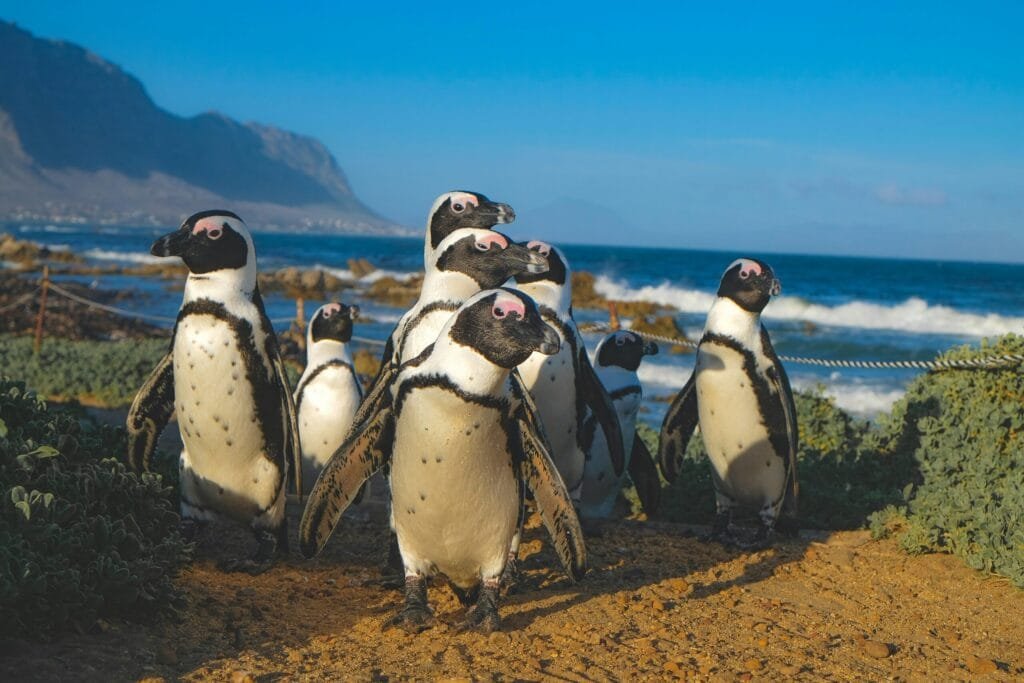
In wine country, sip and learn – vineyards often share their craft’s history. Markets brim with crafts like beaded jewelry or woven baskets – buying supports artisans and scores you a unique souvenir. Respect is key: greet with a smile, ask before snapping photos, and tip where it’s due (10-15% at restaurants). South Africa’s culture isn’t a backdrop – it’s the pulse of your trip.
Off-the-Beaten-Path Gems: Bonus Adventures
Got extra time? Veer off the main trail. Addo Elephant National Park, near Port Elizabeth, rivals Kruger with fewer crowds and elephant herds galore. Closer to Cape Town, Hermanus offers whale-watching (June-November) from cliffs or boats – southern right whales practically wave hello. In Joburg, the Cradle of Humankind unearths humanity’s roots with fossils and caves. These detours add depth without derailing your core plan.
Conclusion: Your South African Story Starts Here
South Africa isn’t just a trip – it’s a tapestry of moments. The roar of a lion, the tang of a Stellenbosch red, the salt spray at Cape Agulhas—they weave a tale you’ll tell for years. This guide hands you the map: a two-week odyssey, cost-saving hacks, safety smarts, and cultural keys. It’s all here to ensure your adventure is as stress-free as it is unforgettable.
So, dust off your suitcase, book that flight, and let South Africa work its magic. Whether you’re a wildlife junkie, a culture buff, or just craving beauty, this land delivers. Safe travels – and don’t forget to tip the parking guy.

